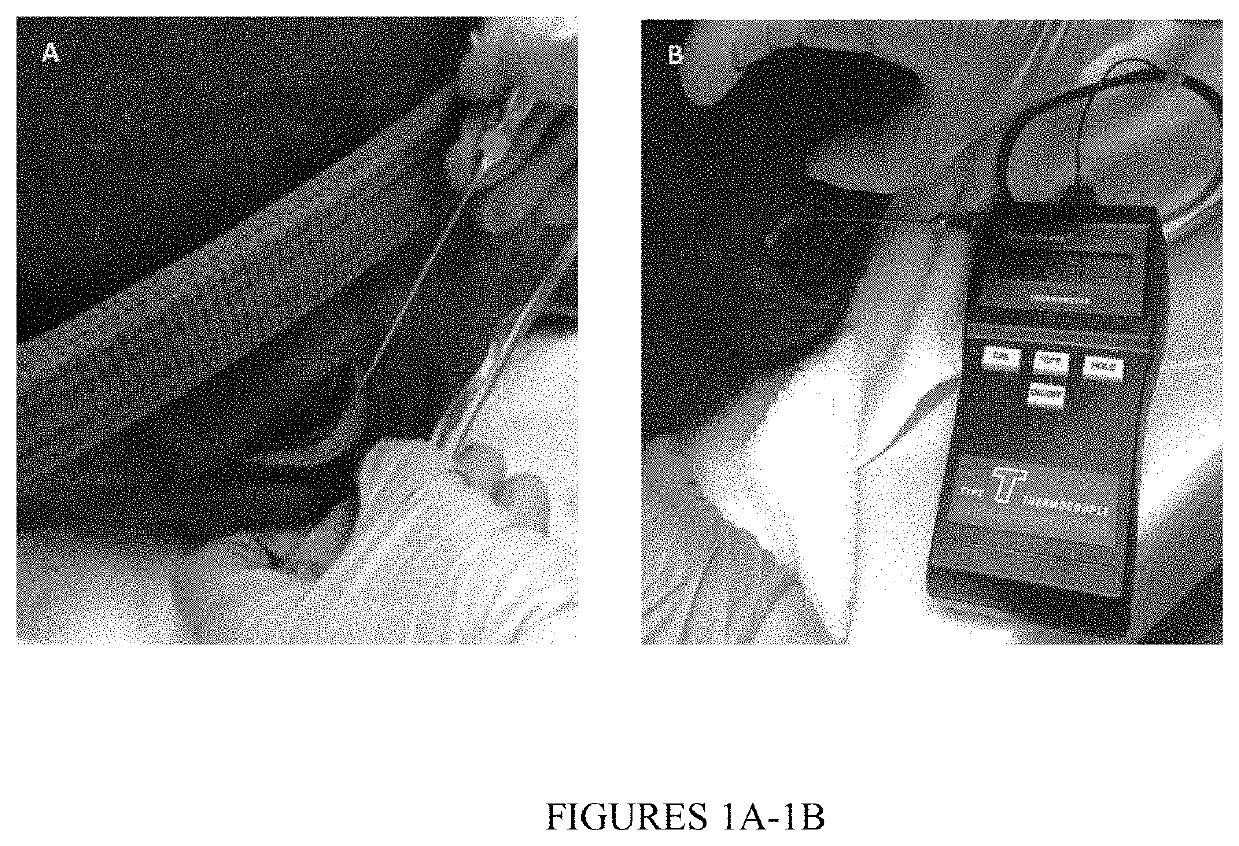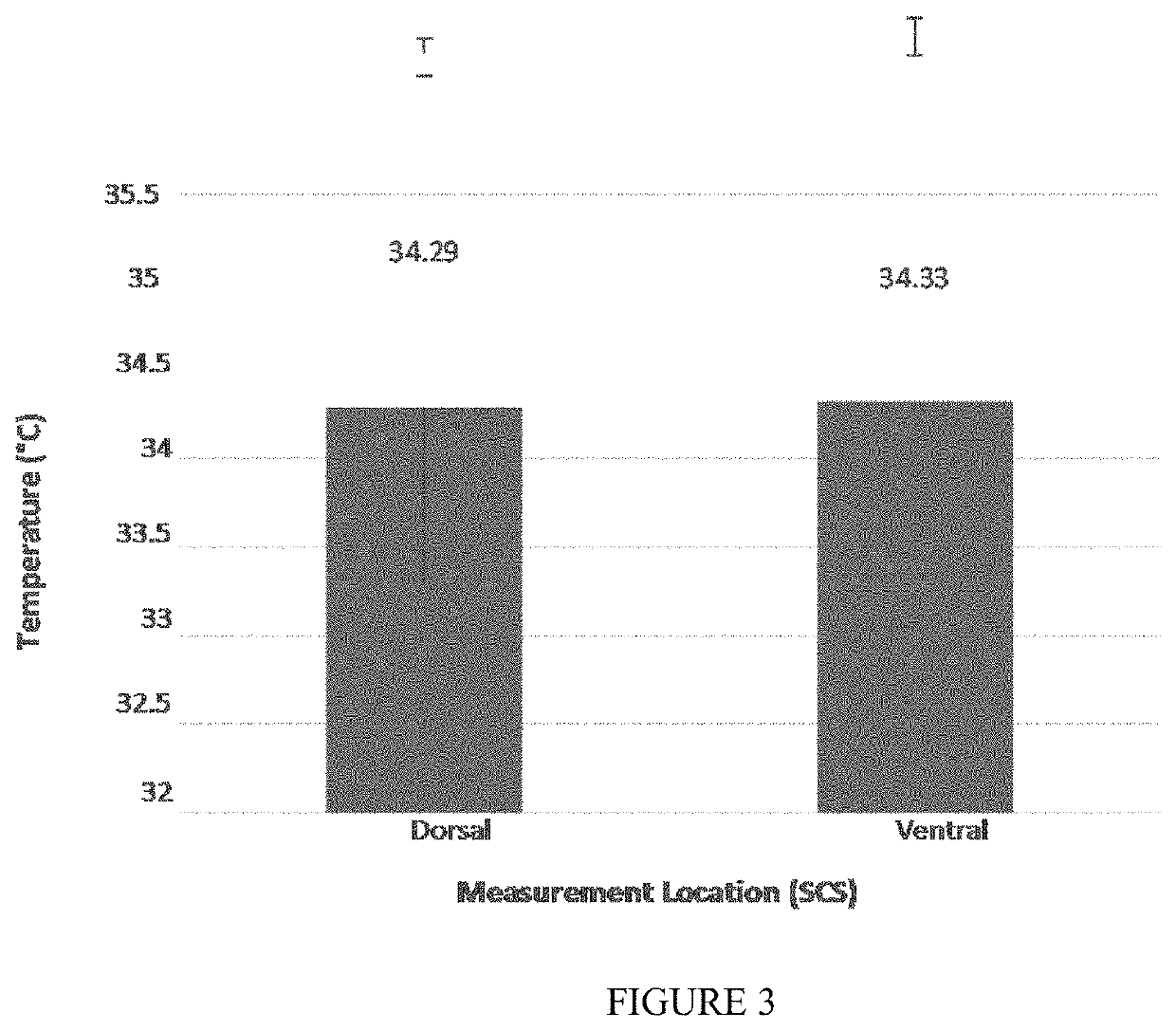Sustained-release voriconazole-containing thermogel and uses thereof
a technology of sutained release and voriconazole, which is applied in the field of veterinary formulations, can solve the problems of rapid keratomalacia (melting of the cornea), prone to fungal ocular infections in horses, and acute complications in affected eyes, so as to improve comfort and ultimate outcome, minimizing stress in patients, and improving compliance
- Summary
- Abstract
- Description
- Claims
- Application Information
AI Technical Summary
Benefits of technology
Problems solved by technology
Method used
Image
Examples
example 2
Thermogel Identification
[0231]This example examines various thermogels for the present disclosure. In particular, various PLGA-PEG-PLGA thermogels were evaluated for injection into the SCS in horses and to determine whether or not the gel retained its thermosensitive properties following combination with voriconazole and methylene blue.
[0232]Two commercially available PLGA-PEG-PLGA triblock copolymers (AK24 / ‘thermogel A’ (MW 1100-1000-1100; 3:1 lactide:glycolide) and AK19 / ‘thermogel B’ (MW 1500-1500-1500; 1:1 lactide:glycolide); Akina Inc., West Lafayette, Ind.) were converted from a solid state (−20° C.) to a liquid state through addition of 0.9% sodium chloride (Hospira Inc., Lake Forest, Ill.), vortexing every 8 hours for 48 hours and maintenance at 4° C. Five thermogels were tested: thermogel A, thermogel B and thermogels combined in A:B ratios of 1:1, 2:1 and 3:1.
[0233]Each thermogel tested was divided into 4×300 μL aliquots (Groups 1, 2 3 and 4). Group 1 aliquots were placed i...
example 3
Voriconazole Release from Thermogels
[0237]A voriconazole-containing thermogel for subconjunctival injection can provide for sustained drug release into target tissues. This example describes the solubility of voriconazole in crystalline form and in ethanol solution in a volume of thermogel suitable for SCS injection (300 μl). Various thermogels containing 1 mg voriconazole are evaluated regarding their release of drug in concentrations exceeding the MIC of common equine fungal pathogens (0.5 μg / ml) for at least 7 days in vitro.
[0238]Two PLGA-PEG-PLGA hydrogels were converted from a solid state (−20° C.) to a liquid state through addition of 0.9% sodium chloride, vortexing every 8 hours for 48 hours and maintenance at 4° C. Three thermogels were then prepared:
[0239]Thermogel 1: 1 mg voriconazole+300 μl PLGA-PEG-PLGA (MW 1100:1000:1100)
[0240]Thermogel 2: 1 mg voriconazole in 10 μl ethanol (Sigma-Aldrich, St Louis, Mo.)+300 μl PLGA-PEG-PLGA (MW 1100:1000:1100)
[0241]Thermogel 3: 1 mg vo...
example 4
An Ex-Vivo Trans-Corneal Permeation Model in Horses
[0245]Franz cell diffusion studies are utilized in evaluation of permeation of topical ocular medications through human, goat, and sheep corneas. This example describes an ex-vivo trans-corneal drug permeation model for use in equine corneas, and also presents evidence on the integrity of the equine epithelial barrier function for 6 hours.
[0246]Fresh equine corneas used in the experiment were obtained from horses enrolled in terminal laboratories performed at the AULATH. Corneoscleral buttons (16 mm diameter) were dissected using standard eye bank technique within 2 hours of enucleation. Fluorescent permeation experiments using a Franz diffusion cell method were performed to examine the integrity of the epithelial barrier function during the times studied (2 and 6 hours). Corneas were mounted horizontally between the donor and the receiving compartments of the diffusion cells (exposure window 0.64 cm2), which were maintained at 37° ...
PUM
| Property | Measurement | Unit |
|---|---|---|
| molecular weight | aaaaa | aaaaa |
| molecular weight | aaaaa | aaaaa |
| temperature | aaaaa | aaaaa |
Abstract
Description
Claims
Application Information
 Login to View More
Login to View More - R&D
- Intellectual Property
- Life Sciences
- Materials
- Tech Scout
- Unparalleled Data Quality
- Higher Quality Content
- 60% Fewer Hallucinations
Browse by: Latest US Patents, China's latest patents, Technical Efficacy Thesaurus, Application Domain, Technology Topic, Popular Technical Reports.
© 2025 PatSnap. All rights reserved.Legal|Privacy policy|Modern Slavery Act Transparency Statement|Sitemap|About US| Contact US: help@patsnap.com



